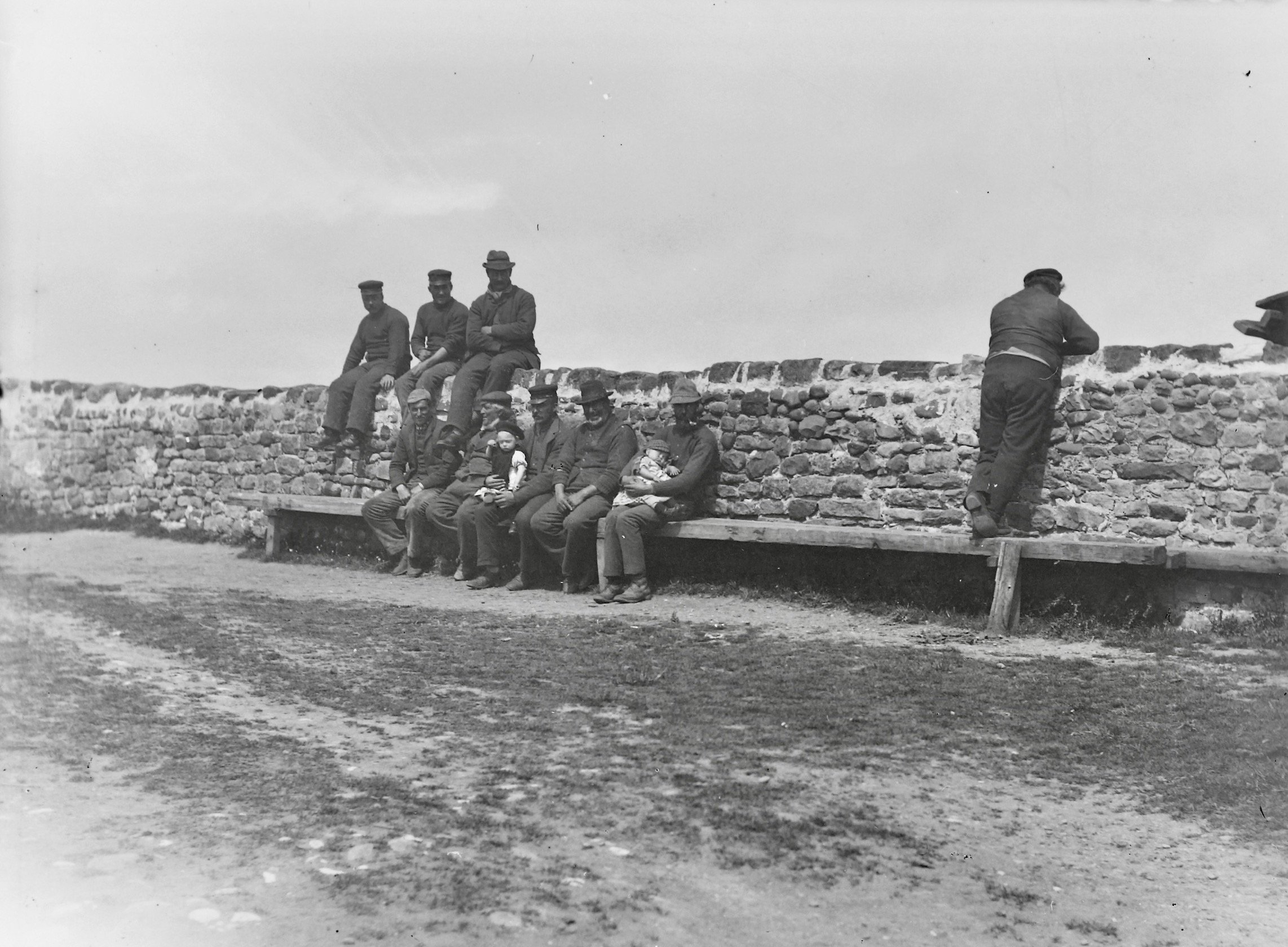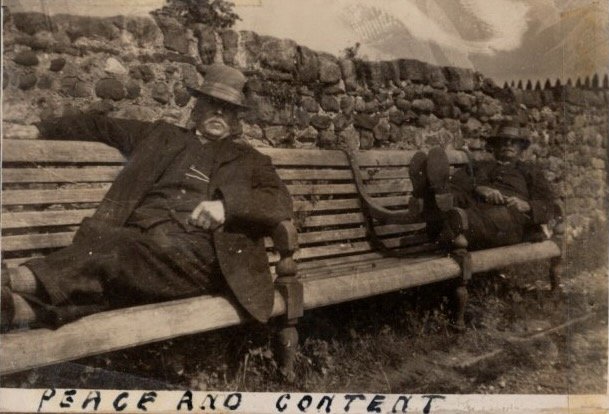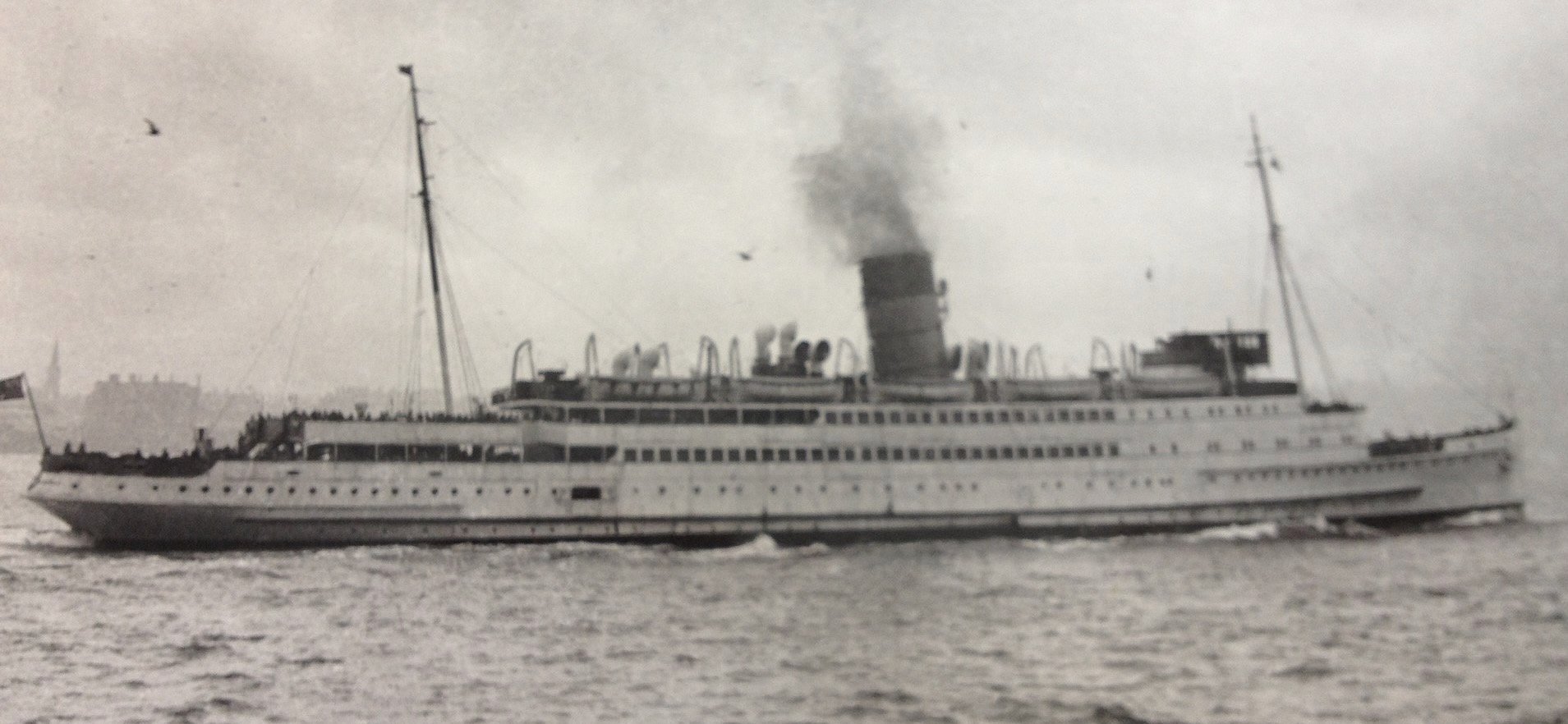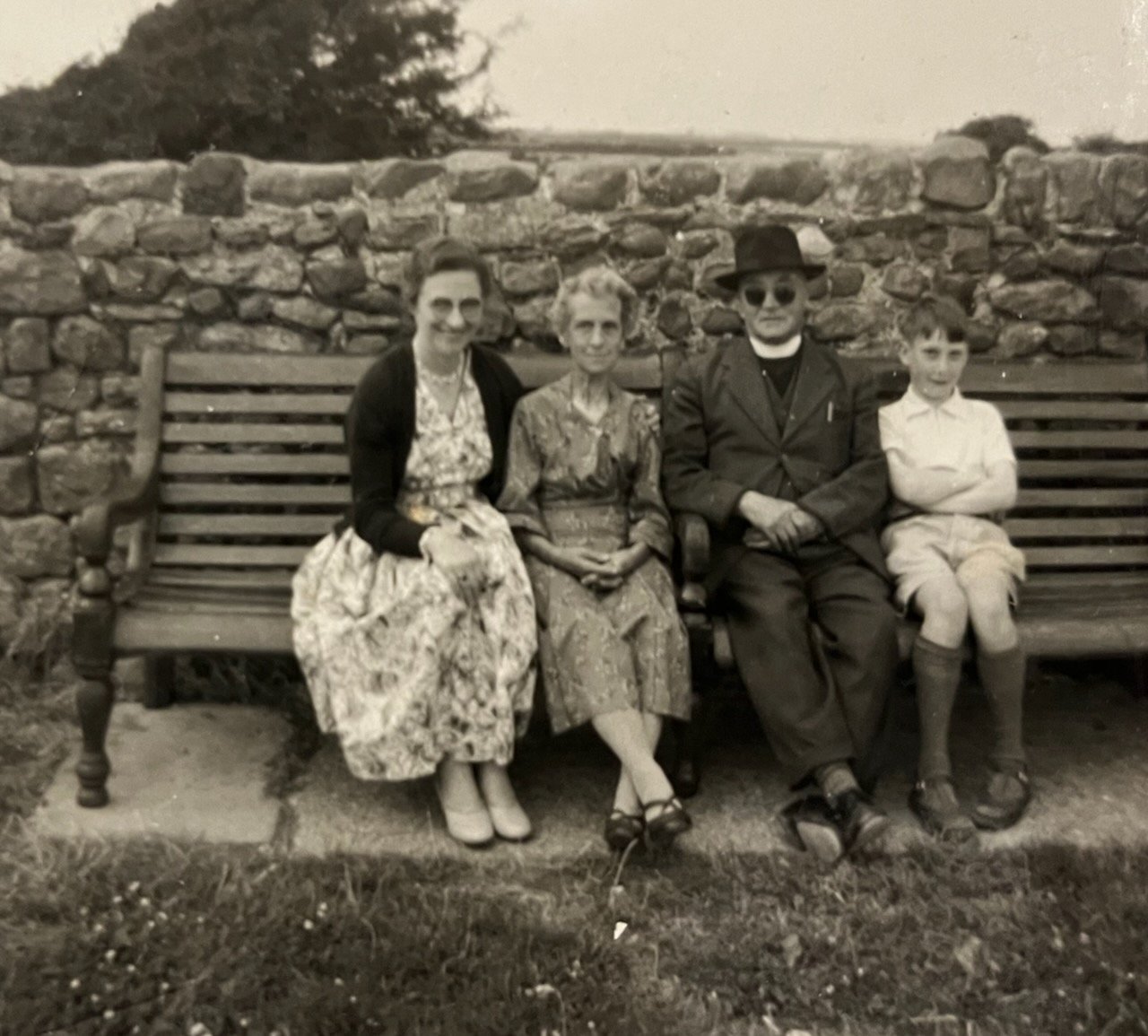The Seat at the top of the Lane
It seems there has always been a seat at the top of the Lane and used many times in photographs recording the friends and families of residents, as well as visitors.
Looking at older photographs before 1919, the seat had been little better than a rough bench. What is remarkable in this photo is its length and the number of occupants it could support. It must have been popular.
The seat at the top of the Lane. A John Walker photo: Courtesy Lancaster City Museums
The photograph dates from around 1890, on the right, with his back to us, is James Spencer, a pilot and fisherman then living in number 10. Previously he had been in Upsteps Cottage and spent the last part of his life in number 2, The Lane.
A guess would be they were talking about families and fishing and all else besides. As many of them were pilots, perhaps they were looking out for ships in the estuary.
A little later, in 1894, the seat is filled to capacity, hosting one of the most famous photographs of villagers - a smiling Luke Gardner with a child on his lap takes centre stage. Many of the other names are known - but it’s not their story.
From the collection of Wilton Atkinson
Here is a smaller group on the same seat a few years later.
Courtesy of the Gilchrist family
Dated to around 1900 is this charming George Gilchrist photograph of a woman with five young children. Sadly, it has not been recorded who they are. It appears the youngsters are all of similar age, so perhaps she is a nursemaid.
The ‘Mansergh’ seat
In his book ‘The Story of Sunderland Point’, Hugh Cunliffe writes of ‘peaceful evenings’ spent gossiping with the fisherfolk of the village. He says residents would naturally congregate at the top of the Lane to sit in comfort on a well maintained, rather luxurious and somewhat famous seat…
Here is a lovely image of Hugh, aged just 4 with two well turned-out young girls – perhaps in their Sunday best on a summer’s day.
From the collection of Hugh Cunliffe
Taken in 1919 or perhaps 1920, on the right of Hugh is his six-year-old sister Barbara, and on the left, nine-year-old Nancy Gardner. Hugh and Barbara will have been staying in Upsteps cottage for the summer. Nancy lives a few steps away in the Summer House.
This is also the earliest known photo, perhaps only weeks after installation, of the ‘Mansergh’ seat destined to become ‘somewhat famous’.
The famous seat is seen in this great photograph, which was tucked away in a corner of one of Harold Gardner’s albums of newspaper cuttings.
From the collection of Harold Gardner: Courtesy of Rosemary Lawn
This wryly comic image is ten years on from Hugh and the two girls, it’s the ‘Mansergh’ seat at the top of the Lane sometime in the early 1930s. The old gent closest is probably James ‘Shirley’ Gardner, Nancy’s father.
So, what is it about this seat that made it (somewhat) famous?
In 1948 it earned a brief article in Morecambe Guardian.
Morecambe Guardian 24 July 1948: Courtesy Guardian Newspapers
Arthur Mansergh, like his family several generations before him, had strong connections with Sunderland Point, decided that the old, bench-like seat was an embarrassment to gentlefolk. He secured wood from the Imperator a German vessel as she was being transformed into the famous transatlantic passenger boat the RMS Berengaria.
He had these materials made into a handsome, and comfortable three section seat.
Imperator c1914: Internet free stock
The Imperator launched in Germany 1913 was at that time the world’s largest ship, bigger than the Titanic. Taken by the USA in 1919 after WW1 in compensation for the sinking of the Lusitania, she was sold in in 1920 to Cunard and renamed RMS Berengaria.
RMS Berengaria c1930s: Internet free stock.
For many years she was the flagship of the Cunard Line until the entry of the Queen Mary and later the Queen Elizabeth into service. The ship could carry 4,000 passengers, more than 900 in First Class. It had a crew of 1,100 and crossed the Atlantic at an average speed of 24 knots.
The first class lounge R.M.S. Berengaria: Internet free stock
Arthur Hassall Mansergh (1868-1937) was the son of Robert Mansergh, the builder of ‘The Moorings’, number 3. They were linoleum merchants of Lancaster. Arthur is perhaps best known as the owner of the yacht Sue which was based at Sunderland Point.
Noticing that Sue was being built in 1919 at the Woodhouse yard in Overton, is it possible that the wood was primarily sourced for the boat with the residue used for the seat?
Tom Gardner, mentioned in the article, as well as maintaining the seat, giving it an annual coat of varnish, was also captain of the Sue.
Here’s the seat in 1930, a group of SP children with Shirley Gardner. In the pram are Arthur Cunliffe and Tom Gardner (junior).
From the collection of Wilton Atkinson
From the collection of Harold Gardner: Courtesy Rosemary Lawn
In this blurred image is Arthur Mansergh, on his seat in 1936 with Mrs Harry Baxter and some Sunderland Point children. It’s Shirley Gardner at the end.
In his book, Hugh Cunliffe remembers there were always two or three of the older fishermen there, ‘I should think it could accommodate nine or ten people according to their width’.
Hugh adds, ‘Shirley Gardner and my father were there on several evenings, Shirley, puffing his pipe, and looking at the river through his telescope, would be watching, as would my father, the latest pride and joy of the Isle of Man fleet. The white painted Lady of Mann’
The Lady of Mann: Internet free stock
Through the 1950s it was something of a landmark, surviving many years due to the care taken by Tom Gardner (senior). Here it is again in 1962, 40 years on from its installation, still looking sound as a bell.
From the collection of Hugh Cunliffe
In the centre are Hugh’s parents, the Revd. William Edward (aged 79) and Eleanor Cunliffe (74).
Today
With changing times, the seat at the top of the Lane is not so popular. While it remains a welcome resting place for visitors, the residents are more likely to be found on the Terraces. The ‘Mansergh’ seat gradually succumbed to old age and was removed in the late 1960s or early 1970s.
The stone wall is now almost fully covered with ivy and brambles, the grass grows freely and the area looks less tidy than it once was. But the current seat is robust and in good shape after recent repairs organised by Janet Goodship.
The seat today (2023)
The brass plate on the seat reads:
The brass plate (2023)
Janet is the granddaughter of George Goodship. We asked if she could tell us a bit more about her grandfather. She says he lived on Oxcliffe Road in Morecambe and that he was a postman. He was also a keen rambler who loved to go to Sunderland Point, which was his favourite place. It is possible he delivered mail to Sunderland Point.
Janet kindly sent a photograph of George dating from around 1967 and contained in an article in the ‘Visitor’.
George W Goodship 1886-1969: Courtesy of Janet Goodship.
Thanks to all those who helped in the preparation of this article and special thanks to Janet Goodship for sending us the photograph and information about her grandfather. The names of the children on the photos are known and can be supplied.
















